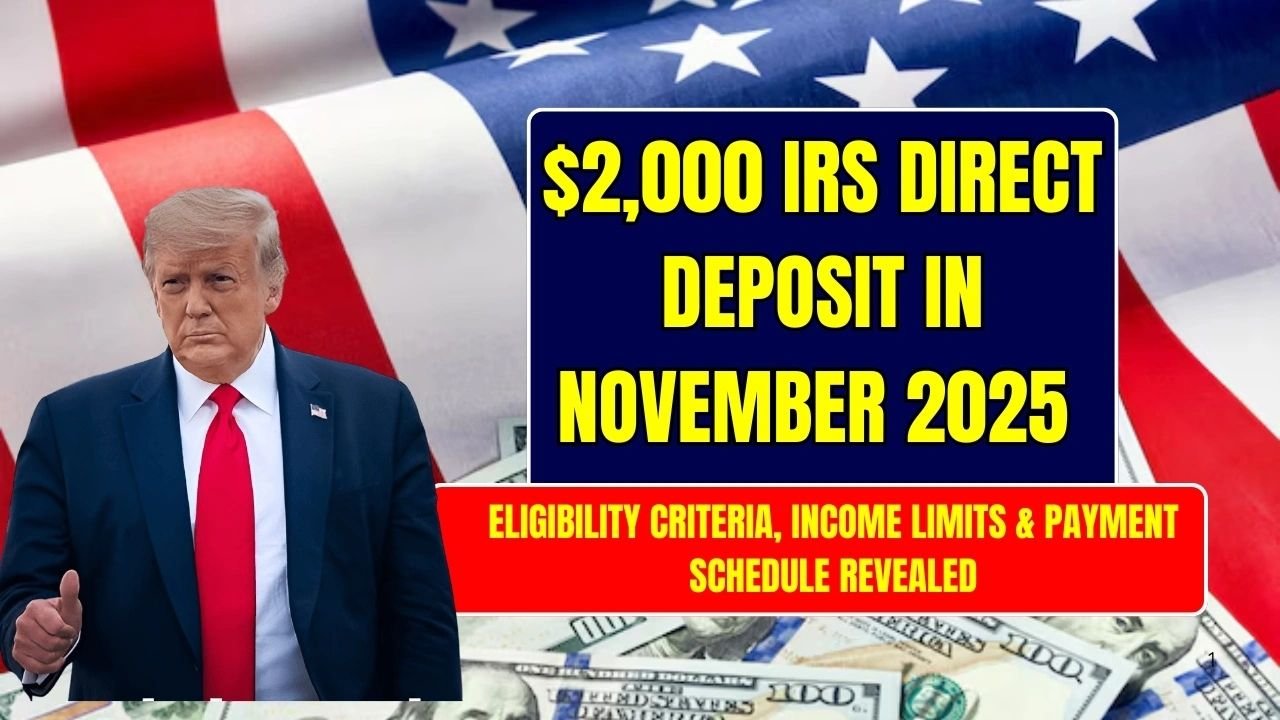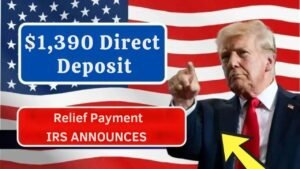Millions of Americans are closely watching discussions around a possible $2,000 IRS Direct Deposit in 2025, a proposal that has gained major attention as families continue to struggle with rising prices and financial pressure. Although the payment has not been approved, the plan is being seriously debated as a potential economic relief measure funded by revenue from U.S. tariffs.
Here’s a simple, clear breakdown of what this proposal includes, who may qualify, and when payments could realistically begin.
What Is the $2,000 IRS Direct Deposit Proposal?
The idea is to send a one-time $2,000 payment to eligible taxpayers using money collected from federal tariffs on imported goods. Instead of raising taxes, the plan would use existing trade revenue and return it to Americans as a “tariff rebate.”
Key points to know
- Proposed: $2,000 per eligible taxpayer
- Funding source: Tariff revenue
- Purpose: Relief for low- and middle-income families
- Status: Not approved — still in proposal stage
- Delivery method: IRS direct deposit, similar to past stimulus checks
Lawmakers and economists are still debating whether the plan is financially possible.
Overview: $2,000 IRS Direct Deposit 2025
| Category | Details |
|---|---|
| Payment Amount | $2,000 one-time direct deposit |
| Funding Source | U.S. import tariffs |
| Suggested By | Former President Donald Trump |
| Income Limit | Estimated cap around $100,000 per household |
| Target Group | Lower- and middle-income taxpayers |
| Application Needed? | Likely automatic using IRS tax returns |
| Legal Status | Pending Supreme Court review + government approval |
| Estimated Cost | Roughly $300B–$500B |
| Possible Payment Date | Mid–late 2026 if approved |
Why the Tariff Rebate Is Being Discussed
The proposal gained attention because Americans have indirectly paid for tariffs through higher prices on imported goods. Supporters argue that returning part of this money to taxpayers would:
- Offset inflation
- Reduce pressure on family budgets
- Improve holiday-season spending
- Share trade revenue more fairly
However, experts note that tariff collections—around $195 billion this year—are far below what would be required to fund a full nationwide payout.
This creates a major funding challenge.
How the Payment Would Be Delivered
If approved, the IRS would likely distribute the funds using the same system used for stimulus checks.
Most Americans would receive:
- Direct deposit if banking information is on file
- Mailed checks for those without direct deposit info
- Prepaid debit cards in limited cases
Expected eligibility rules
- Likely income limit: Under $100,000 household income
- Must have filed recent tax returns
- High-income earners would be excluded
Officials are also reviewing whether it could be issued as a refundable tax credit, which might delay payments but simplify administration.
Legal and Economic Challenges
1. Supreme Court Tariff Case
A key risk is an ongoing Supreme Court case questioning whether the tariffs used to fund this rebate were legally imposed.
A ruling against the government could mean:
- Tariff revenue decreases
- Refunds must be issued to importers
- The rebate program loses its primary funding stream
2. Cost vs. Revenue Gap
Sending $2,000 to most U.S. taxpayers would cost $300–$500 billion, far more than current tariff revenue. Congress would need:
- Extra funding
- A scaled-down program
- Stricter eligibility rules
3. Inflation Concerns
Economists warn that releasing billions into the economy at once could increase spending and potentially raise prices again.
When Could Payments Actually Arrive?
Even if approved in 2025, experts say the earliest possible payment window would be:
Mid to late 2026
Why the delay?
- Supreme Court ruling pending
- Congressional action required
- IRS planning and distribution timelines
Until these steps are completed, no payments can be issued.
FAQs
1. Has the $2,000 IRS Direct Deposit been approved?
No. It is still a proposal with no finalized law.
2. Who would qualify for the payment?
Early drafts suggest households earning under $100,000 annually.
3. Will the IRS send the money automatically?
Yes—most eligible taxpayers would receive automatic deposits based on their tax returns.
4. What’s stopping the program right now?
A Supreme Court ruling on tariff legality and the need for congressional authorization.
5. When might the payment arrive if approved?
Possibly mid–late 2026, depending on legal and administrative progress.
Conclusion
The idea of a $2,000 IRS Direct Deposit in 2025 has generated enormous interest, but it remains far from guaranteed. Between legal uncertainty, funding gaps, and political negotiations, the proposal still has a long way to go. Until official announcements come from the IRS or Treasury Department, Americans should stay informed but remain cautious.





